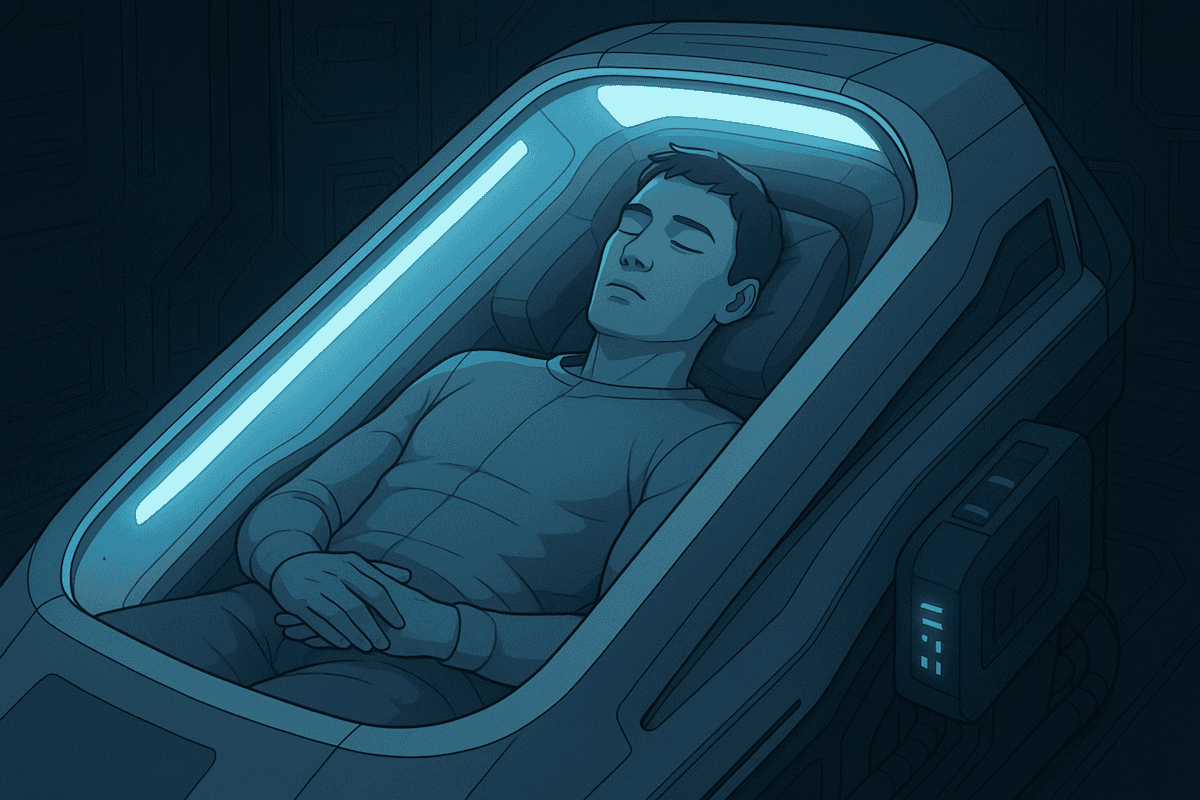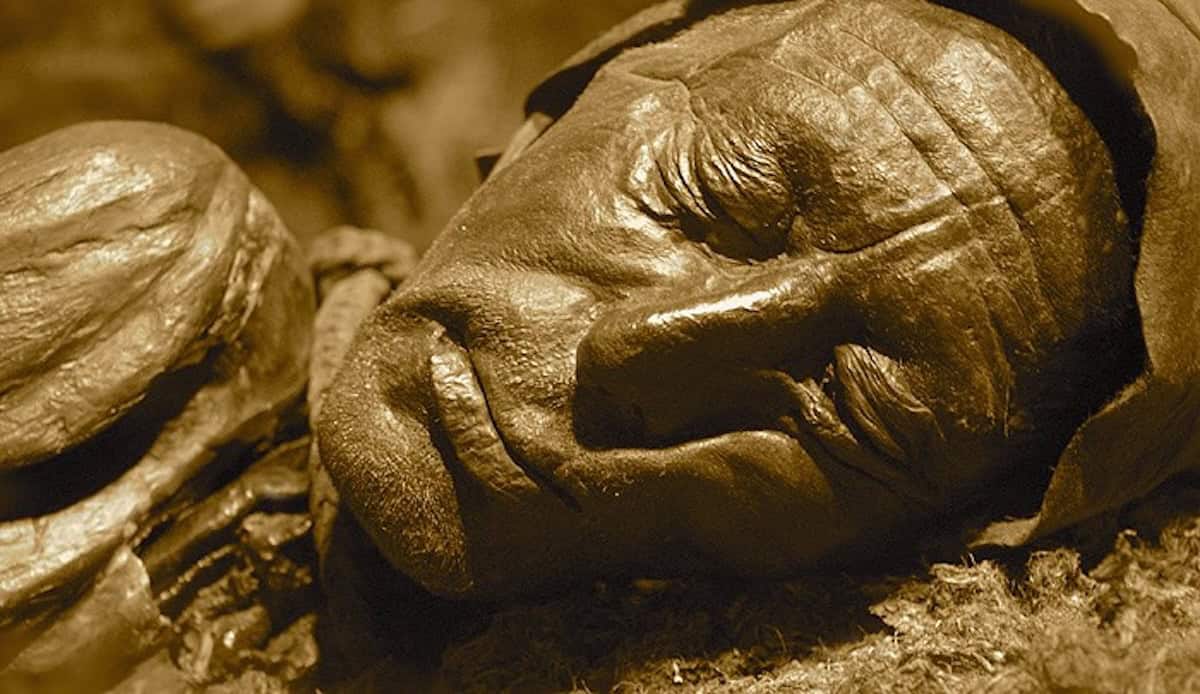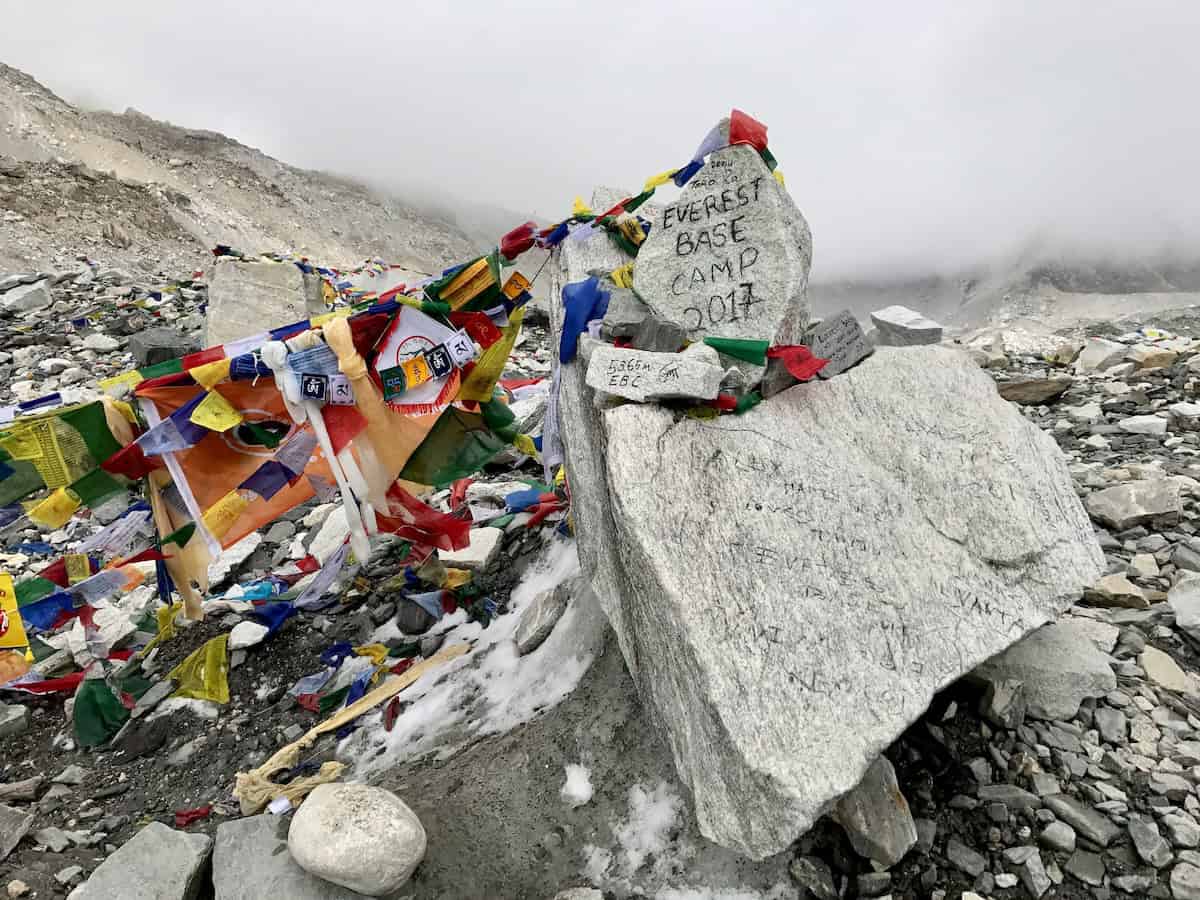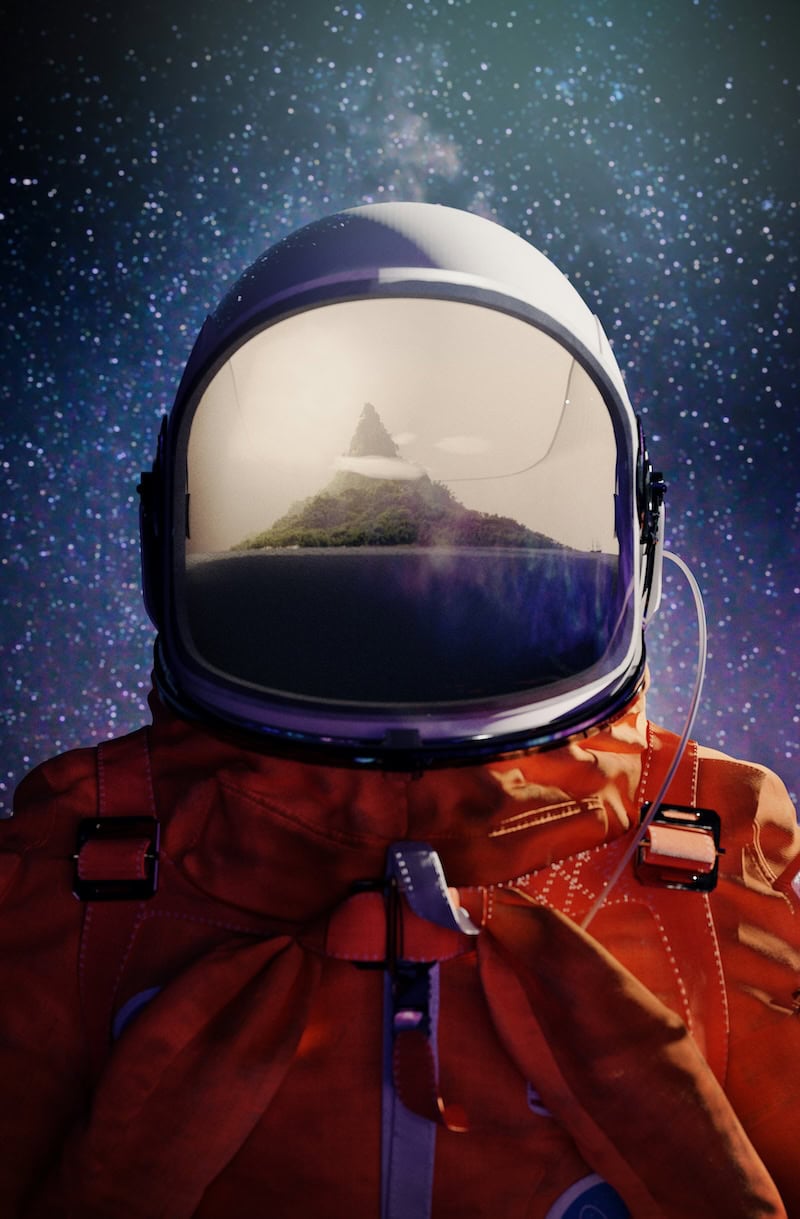
When Nature Presses Pause: Bog Bodies, Frozen Climbers, and Human Hibernation
By: Sarah Stone
Skip to Section
Death means decay. Flesh decomposes, bones crumble, and within years, the physical evidence of a person’s existence disappears…or does it?
Sometimes nature won’t let go.
Under very specific conditions – the right chemistry, cold, and lack of oxygen – human bodies can last for centuries or even millennia, preserved in time. Different from Egyptian mummies wrapped in elaborate rituals, these people are morbid time capsules preserved by bogs, mountains, and extreme cold.
And going beyond natural conditions, folklore from around the world suggests that humans once practiced something like hibernation, inducing suspended animation to survive lean times. While most of these tales are metaphorical, modern science continues to find uncomfortable evidence that makes you wonder if there’s some truth to those stories.
Bog Bodies: Preserved in Peat for Thousands of Years

Tollond Man – photo by Chocho8 on Wikimedia Commons
Since the 18th century, peat cutters in Northern Europe have unearthed over 1,850 bodies from bogs in Denmark, Germany, the Netherlands, Ireland, and the United Kingdom. The preservation is eerie: skin, hair, internal organs, and stomach contents have been found intact, oftentimes appearing fresh enough that people have reported them to the police as murder victims.
The peat bogs’ unique chemistry is cold, acidic, and oxygen-free, with sphagnum moss that releases a bog acid that tans skin like leather while dissolving bones. Hair protein survives the acidity, which is why many bog bodies have reddish hair – the color comes from chemical reactions with the bog water, and not necessarily their original hair color.
Tollund Man, found in Denmark in 1950, still has the rope around his neck that strangled him over 2,300 years ago. His face looks peaceful, almost sleeping. Danish police were able to take his thumbprint in 1976.
The oldest bog body discovered so far dates to around 8000 BCE. Cashel Man from Ireland, dating to 2000 BCE, holds the title of oldest fleshed bog body. Most bog bodies cluster in the Iron Age, between 500 BCE and 100 CE.
Many show signs of violence. Old Croghan Man from Ireland had deep cuts on his chest and lost his head and lower body. Grauballe Man from Denmark had his throat slashed. Some bodies were pinned down with stakes driven through them into the peat.
It’s debated as to why these people ended up in bogs – it could be ritual sacrifice, criminal punishment, accidental death, or some other reason. But the preservation is so good that scientists can determine victims’ last meals (most ate grains or bread, and a few had meat).
Everest: Frozen Bodies in the Death Zone

Everest Base Camp – by Mari Partyka on Unsplash
Mount Everest has become the world’s highest graveyard. Since 1921, approximately 340 people have died attempting to summit the mountain. There are about 200 bodies on Everest, preserved by cold and heights so extreme that helicopters (generally) can’t reach and recovery teams risk their own lives trying to retrieve them.
The Death Zone above 26,000 feet creates preservation conditions similar to industrial freezers. Temperatures here stay consistently below zero, oxygen levels are so low that hikers’ cells start dying, and dead bodies freeze solid within hours.
Green Boots, believed to be Indian climber Tsewang Paljor who died in 1996, became a landmark on the northeast route. His body sat in a limestone cave at 27,900 feet, identifiable by his neon green Koflach boots. Climbers used him as a trail marker until the body was moved to a less conspicuous spot in 2014 out of respect.
Francys Arsentiev earned the nickname “Sleeping Beauty” after she died in 1998. She and her husband attempted the summit without supplemental oxygen. They got separated during descent. Other climbers found her alive but frost-bitten and disoriented. They couldn’t help her – saving her would have killed them. Her body remained visible on the mountain until 2007.
George Mallory’s body wasn’t found until 1999, 75 years after he disappeared trying to summit in 1924. His upper torso and left arm were almost perfectly preserved, still dressed in a tweed suit with primitive climbing equipment nearby. Whether he made it to the top is still a mystery.
Rainbow Valley, a section of the northeast ridge route, gets its name from the colorful down jackets of fallen climbers scattered across the slope. The bodies have become permanent fixtures, too dangerous to retrieve.
Climate change is now exposing more bodies as glaciers melt. Nepal conducted cleanup expeditions in 2024, retrieving several bodies – some skeletal, some still in full climbing gear. Moving a frozen body at high altitude takes dozens of rescuers, days of work, and tens of thousands of dollars.
Hibernation: Myth or Reality?

Will astronauts hibernate one day? – Image by Nick Brunner on Unsplash
Some humans have survived conditions that should have killed them, entering states that look remarkably like hibernation.
Russian peasants reportedly practiced lotska – a winter sleep lasting months. The 1900 British Medical Journal described villagers in northeastern Russia who would spend half the year in a torpor-like state, barely moving, conserving energy through brutal winters when food was scarce. The 1906 New York Times also ran a story about starving Russian peasants lying motionless for days to conserve calories.
Whether lotska was real hibernation or extreme starvation mixed with limited activity remains unclear. It could be an urban legend filtered through scientific curiosity.
In 2006, 35-year-old Mitsutaka Uchikoshi went missing for 24 days on a snowy Japanese mountainside. By the time rescuers found him, his body temperature had dropped to 71°F – nearly 27 degrees below normal. His organs had nearly shut down, and his metabolism had slowed almost to nothing. Incredibly, he woke up and made a full recovery.
Anna Bågenholm of Sweden survived 80 minutes trapped under ice in a frozen lake in 1999. Her body went into cardiac arrest, and her core temperature dropped to 56.7°F – that’s the lowest recorded body temperature for an accidental hypothermia victim who survived. She had no brain damage, and made a full recovery.
These cases fascinate researchers studying induced hibernation. Cell biologist Mark Roth at the Fred Hutchinson Cancer Research Center demonstrated in 2005 that exposing mice to hydrogen sulfide gas induced a hibernation-like state. The mice’s metabolism dropped dramatically and their body temperature fell. And yet hours later, when returned to normal air, they woke up unharmed.
This means that the implications for medicine and space travel are massive. What if you could induce hibernation in trauma patients so that their bodies could survive injuries that would normally kill them? Or if you could put astronauts in suspended animation for multi-year voyages to Mars or beyond? And what if you could preserve organs for transplant indefinitely?
Of course, human hibernation faces massive hurdles. Certain animals that hibernate naturally, like wood frogs and Antarctic fish, produce antifreeze-like compounds in their blood. Their metabolism shifts between burning sugars and fats, and their brains handle reduced oxygen without damage. And most importantly, they wake up naturally without assistance, like changing the type of air the mice were breathing in the experiment noted above.
Humans lack these built-in systems: cooling a body too fast creates ice crystals that will shred and destroy cells. Reducing oxygen triggers panic responses that burn more energy, not less of it. And rewarming too quickly causes reperfusion injury – damage from blood flow returning to oxygen-starved tissues.
When Bodies Outlast Memory
Preserved bodies – even those separated by thousands of years – force a similar confrontation with mortality in ways that decayed and cremated remains don’t. You can see their faces and take their fingerprints, feel the last items of clothing they ever wore, and know the last thing they ate. And hibernation seen in myth and nature gives us hope that we can suspend life. Maybe we can wait out hardship and resume living when things are better.
Modern science edges toward making that wishful thinking a reality. Research published in 2020 analyzed 430,000-year-old fossilized bones from Atapuerca, Spain, and found lesions consistent with hibernation patterns in bears. The researchers speculated that early humans might have practiced a type of hibernation through harsh Pleistocene winters.
The future might bring us human hibernation for medical emergencies or space travel. Those from the past might have accomplished it for survival. Meanwhile, the present gives us bodies frozen in time, waiting for us to learn their lessons about death, preservation, and the thin line between.
About the Author
 As the editor-in-chief of Frayed Passport, my goal is to help you build a lifestyle that lets you travel the world whenever you want and however long you want, and not worry about where your next paycheck will come from. I've been to 20+ countries and five continents, lived for years as a full-time digital nomad, and have worked completely remotely since 2015. If you would like to share your story with our community, or partner with Frayed Passport, get in touch with me using the form on our About page.
As the editor-in-chief of Frayed Passport, my goal is to help you build a lifestyle that lets you travel the world whenever you want and however long you want, and not worry about where your next paycheck will come from. I've been to 20+ countries and five continents, lived for years as a full-time digital nomad, and have worked completely remotely since 2015. If you would like to share your story with our community, or partner with Frayed Passport, get in touch with me using the form on our About page.Information published on this website and across our networks can change over time. Stories and recommendations reflect the subjective opinions of our writers. You should consult multiple sources to ensure you have the most current, safe, and correct details for your own research and plans.
Frayed Passport is a participant in the Amazon Associates Program, an affiliate advertising program designed to provide a means for sites to earn advertising fees by advertising and linking to Amazon.com. We also may share links to other affiliates and sponsors in articles across our website.




